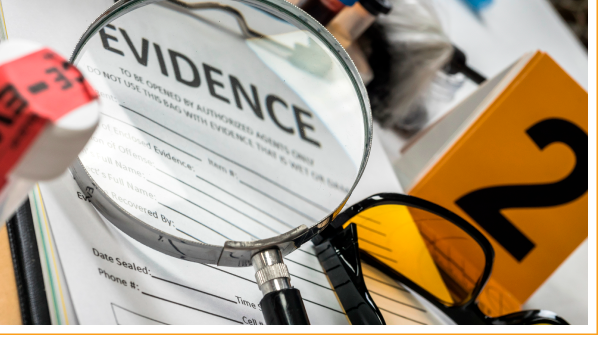 Ever since I discovered my uncles hardback collection of Hardy Boys mysteries when I was 10 years old, I’ve devoured mystery novels, television shows, and movies. It was the Hardy Boys that got me through my fourth grade reading classes! Later, I would discover the works of Sir Arthur Conan Doyle, Agatha Christie, Tony Hillerman, Robert Crais, and so many other authors. I was enthralled by how these writers developed the characters and staged the crime scene. Their writings invited me, the reader, to become an observer in the unfolding process of solving the crime. This week’s Torah portion Tzav צו (Leviticus 6:1-8:36) contains a verse that reads like a crime scene!
Ever since I discovered my uncles hardback collection of Hardy Boys mysteries when I was 10 years old, I’ve devoured mystery novels, television shows, and movies. It was the Hardy Boys that got me through my fourth grade reading classes! Later, I would discover the works of Sir Arthur Conan Doyle, Agatha Christie, Tony Hillerman, Robert Crais, and so many other authors. I was enthralled by how these writers developed the characters and staged the crime scene. Their writings invited me, the reader, to become an observer in the unfolding process of solving the crime. This week’s Torah portion Tzav צו (Leviticus 6:1-8:36) contains a verse that reads like a crime scene!
After detailing the various animal sacrifices that are to be brought, we read “… blood on the ridge of Aaron’s right ear, and on the thumb of his right hand, and on the big toe of his right foot.” (Lev. 8:23) The same was to be found on Aaron’s sons in verse 24. This is not the only time the Torah mentions this intriguing ritual to be done to Aaron and his sons. This verse in Leviticus is a repetition of the verse we find in Parashat Tetzaveh תצוה, Exodus 29:20.
I can easily imagine Sherlock Holmes, Hercule Poirot, Cagney & Lacey, Elvis Cole, even Frank and Joe Hardy, approaching this spectacle with surprise and shock. I can hear them consulting with officers on the scene, “you mean, blood is to be found only on the right ears, thumbs, and big toes of the victims?”
To make sense of this Biblical scene, let us turn to consulting detectives, our Biblical Commentators.
Philo of Alexandria (20 BCE — 50 CE, Ancient Greece) explained this scene as follows:
“This signifies that the prefect man must be pure every word and action as a whole, for it is the hearing that judges his words, the hands that are symbols of action, and the foot that symbolizes the way a person walks through life.” (On The Life of Moses, III, 2:17)
According to Detective Philo, the ear, thumb and big toe were selected to remind the Cohanim (priests) of how to better carry out their functions. The Cohanim must be careful of what they say and how they speak. The Cohanim must also be prepared to carry out the actions of being the Cohanim of the people. Lastly, the Cohanim must be cognizant of how they are living their lives, after all, they are the Cohanim and should live their lives as a righteous example to others.
In the Chumash edited by Joseph Herman Hertz, the reason that the ear, thumb, and big toe are to be smeared with blood is the following:
“The ear was touched with blood, that it may be consecrated to hear the word of God; the thumb, to perform the duties of the priesthood; and the foot, to walk in the path of righteousness.” (J.H. Hertz Pentateuch and Haftarahs 2nd edition, Soncino Press, 1965. p. 437)
Detective Hertz, then, presents us with yet another possibility, similar in someways to “Detective” Philo. Blood is on the ear to remind the Cohanim that their ears, which I understand to mean their minds, must be opened in order to receive truths yet to unfold. The thumb and toe are smeared with blood to remind the Cohanim they are to conduct their lives in a righteous manner.
I would like to add my own, humble, reading of this scene. As a former chaplain for hospitals, senior care centers, prisons and hospice, I find a deeper meaning as to why the ear, the thumb, and the big toe are selected for the smearing of the blood. I also want to expand this ritual and interpretation to not only the Cohanim, but to all of us. If, the Cohanim represent the best of the community, then each of us should live our lives as if we were Cohanim, to the best or our ability.
Why the ear? The ear is selected to teach us the extreme importance of active listening and empathy. Not only the Cohanim, but we as well encounter people who speak their hearts, they come share words of joy and fulfillment, they unload tensions and bitterness, they vent words of grief and pain. How challenging it is to be the non-anxious presence when a friend or a family member speak such words — but how necessary it is at that time. If we, as humans, were better able to hear the joy, or frustration, or pain behind the words of those speaking to us, how better we might respond to them as a fellow human being.
Why the thumb? It’s important, not only for the Cohanim, but for all of us to offer words of appreciation and acknowledgement. That’s why I feel the thumb was selected — to offer a 👍 “thumbs up” to those around us. To show appreciation to another, offer words of support to someone who’s undergoing a challenge, to acknowledge another’s accomplishment — this is how we can connect with another.
Lastly, why the big toe? It has become all too easy for us to sit back and criticize the actions and words of others. Social media has elevated that to a constant barrage of ridicule and condemnation and it is tearing at the fabric of our society. I feel the toe was selected to teach us all to not judge another until you have stood in their place, walked in their ways, and lived as they have lived.
Blood on the ear, thumb, and big toe. It’s not only for the Cohanim, it is for all leaders and, indeed, a reminder to us all.


After detailing the various animal sacrifices that are to be brought, we read “… blood on the ridge of Aaron’s right ear, and on the thumb of his right hand, and on the big toe of his right foot.” (Lev. 8:23) The same was to be found on Aaron’s sons in verse 24. This is not the only time the Torah mentions this intriguing ritual to be done to Aaron and his sons. This verse in Leviticus is a repetition of the verse we find in Parashat Tetzaveh תצוה, Exodus 29:20.
I can easily imagine Sherlock Holmes, Hercule Poirot, Cagney & Lacey, Elvis Cole, even Frank and Joe Hardy, approaching this spectacle with surprise and shock. I can hear them consulting with officers on the scene, “you mean, blood is to be found only on the right ears, thumbs, and big toes of the victims?”
To make sense of this Biblical scene, let us turn to consulting detectives, our Biblical Commentators.
Philo of Alexandria (20 BCE — 50 CE, Ancient Greece) explained this scene as follows:
“This signifies that the prefect man must be pure every word and action as a whole, for it is the hearing that judges his words, the hands that are symbols of action, and the foot that symbolizes the way a person walks through life.” (On The Life of Moses, III, 2:17)
According to Detective Philo, the ear, thumb and big toe were selected to remind the Cohanim (priests) of how to better carry out their functions. The Cohanim must be careful of what they say and how they speak. The Cohanim must also be prepared to carry out the actions of being the Cohanim of the people. Lastly, the Cohanim must be cognizant of how they are living their lives, after all, they are the Cohanim and should live their lives as a righteous example to others.
In the Chumash edited by Joseph Herman Hertz, the reason that the ear, thumb, and big toe are to be smeared with blood is the following:
“The ear was touched with blood, that it may be consecrated to hear the word of God; the thumb, to perform the duties of the priesthood; and the foot, to walk in the path of righteousness.” (J.H. Hertz Pentateuch and Haftarahs 2nd edition, Soncino Press, 1965. p. 437)
Detective Hertz, then, presents us with yet another possibility, similar in someways to “Detective” Philo. Blood is on the ear to remind the Cohanim that their ears, which I understand to mean their minds, must be opened in order to receive truths yet to unfold. The thumb and toe are smeared with blood to remind the Cohanim they are to conduct their lives in a righteous manner.
I would like to add my own, humble, reading of this scene. As a former chaplain for hospitals, senior care centers, prisons and hospice, I find a deeper meaning as to why the ear, the thumb, and the big toe are selected for the smearing of the blood. I also want to expand this ritual and interpretation to not only the Cohanim, but to all of us. If, the Cohanim represent the best of the community, then each of us should live our lives as if we were Cohanim, to the best or our ability.
Why the ear? The ear is selected to teach us the extreme importance of active listening and empathy. Not only the Cohanim, but we as well encounter people who speak their hearts, they come share words of joy and fulfillment, they unload tensions and bitterness, they vent words of grief and pain. How challenging it is to be the non-anxious presence when a friend or a family member speak such words — but how necessary it is at that time. If we, as humans, were better able to hear the joy, or frustration, or pain behind the words of those speaking to us, how better we might respond to them as a fellow human being.
Why the thumb? It’s important, not only for the Cohanim, but for all of us to offer words of appreciation and acknowledgement. That’s why I feel the thumb was selected — to offer a 👍 “thumbs up” to those around us. To show appreciation to another, offer words of support to someone who’s undergoing a challenge, to acknowledge another’s accomplishment — this is how we can connect with another.
Lastly, why the big toe? It has become all too easy for us to sit back and criticize the actions and words of others. Social media has elevated that to a constant barrage of ridicule and condemnation and it is tearing at the fabric of our society. I feel the toe was selected to teach us all to not judge another until you have stood in their place, walked in their ways, and lived as they have lived.
Blood on the ear, thumb, and big toe. It’s not only for the Cohanim, it is for all leaders and, indeed, a reminder to us all.